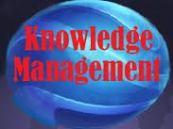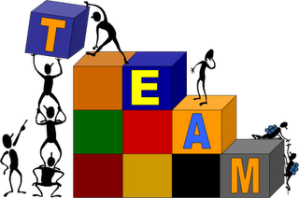Event: Blood Donation Camp ` Sahay – A Proximo CSR Initiative `
Date: 02 March, 2013.
A voluntary blood donation camp was organized by Proximo TechSoft Private Limited ,Banaglore on 02 March 2013. A team from Sankalp India Foundation & Rashtrotthana blood bank conducted the camp, wherein 51 people came forward to donate blood.
At PTSPL every Employee is encouraged to imbibe the principle of community service and be generous by beliefs beyond themselves. Organizing a Blood Donation Camp is just another step in this direction also being our first to begin.
The donors went through a series of medical checkups before donating blood and were given refreshments, a memento and a certificate of appreciation for this service to humanity.
A confidential blood test report and a DONOR’s card shall be provided to the donors by Rashtrotthana Blood Bank which is the country’s largest and most modern blood bank with state-of-art technologies and service.
The event was a huge success with a large number of People and employees turning up for the cause.
Knowledge Management, (KM) is a concept and a term that arose approximately two decades ago, roughly in 1990. Quite simply one might say that it means organizing an organization’s information and knowledge holistically, but that sounds a bit wooly, and surprisingly enough, even though it sounds overbroad, it is not the whole picture. Very early on in the KM movement, Davenport (1994) offered the still widely quoted definition
“Knowledge management is the process of capturing, distributing, and effectively using knowledge.”
This definition has the virtue of being simple, stark, and to the point. A few years later, the Gartner Group created another second definition of KM, which is perhaps the most frequently cited one (Duhon, 1998):
“Knowledge management is a discipline that promotes an integrated approach to identifying, capturing, evaluating, retrieving, and sharing all of an enterprise’s information assets. These assets may include databases, documents, policies, procedures, and previously un-captured expertise and experience in individual workers.”
Both definitions share a very organizational, a very corporate orientation. KM, historically at least, is primarily about managing the knowledge of and in organizations.
The operational origin of KM, as the term is understood today, arose within the consulting community and from there the principles of KM were rather rapidly spread by the consulting organizations to other disciplines. The consulting firms quickly realized the potential of the Intranet flavor of the Internet for linking together their own geographically dispersed and knowledge-based organizations. Once having gained expertise in how to take advantage of intranets to connect across their organizations and to share and manage information and knowledge, they then understood that the expertise they had gained was a product that could be sold to other organizations. A new product of course needed a name, and the name chosen, or at least arrived at, was Knowledge Management. The timing was propitious, as the enthusiasm for intellectual capital in the 1980s, had primed the pump for the recognition of information and knowledge as essential assets for any organization.
Perhaps the most central thrust in KM is to capture and make available, so it can be used by others in the organization, the information and knowledge that is in people’s heads as it were, and that has never been explicitly set down.
Self-confidence.
Self-confidence is commonly defined as the sureness of feeling that you are equal to the task at hand. This sureness is characterized by absolute belief in ability. You may well know someone whose self-belief has this unshakable quality, whose ego resists even the biggest setbacks. In such people, confidence is as resilient as a squash ball: the harder the blow, the quicker they bounce back. Nonetheless, although confidence is a desirable characteristic, arrogance – or a sureness of feeling not well founded in one’s ability – is undesirable. If self-confidence is perhaps the ‘guardian angel of sports performers’ then arrogance is their nemesis.
The six sources of self-confidence
The confidence an individual feels during a particular activity or situation is generally derived from one or more of the following six elements:
1. Performance accomplishments are the strongest contributor to sport confidence. When you perform any skill successfully, you will generate confidence and be willing to attempt something slightly more difficult. Skill learning should be organized into a series of tasks that progress gradually and allow you to master each step before progressing on to the next. Personal success breeds confidence, while repeated personal failure diminishes it.
2. Being involved with the success of others can also significantly bolster your confidence, especially if you believe that the performer you are involved with (e.g. a team-mate) closely matches your own qualities or abilities. In effect, it evokes the reaction: “if they can do it, I can do it”.
3. Verbal persuasion is a means of attempting to change the attitudes and behavior of those around us, and this includes changing their self-confidence. In sport, coaches often try to boost confidence by convincing athletes that the challenge ahead is within their capabilities: “I know you are a great player so keep your head up and play hard”. An athlete might reinforce this by repeating the message over and over to him or herself as a form of self-persuasion. A tip here is to avoid stating what you want in the negative; so, rather than “‘I really don’t want to come off second best” try “I really want to win this one”. Accordingly, your mind will not need to consider what is not required in order to arrive at what is.
4. Imagery experiences have to do with athletes recreating multi-sensory images of successful performance in their mind. Through creating such mental representations, mastery of a particular task or set of circumstances is far more likely. What you see is what you get
5. Physiological states can reduce feelings of confidence through phenomena such as muscular tension, palpitations and butterflies in the stomach. The bodily sensations associated with competition need to be perceived as being facilitative to performance and this can be achieved through the application of appropriate stress management interventions such as the “five breath technique” and “thought-stopping”.
6. Emotional states is the final source of self-confidence and relates to how you control the emotions associated with competition, such as excitement and anxiety. Very often, the importance of the occasion creates self-doubt, which is why it is essential to control your thoughts and emotions. Learning imagery and concentration skills such as those described in “the spotlight of excellence”.
Positive Thinking
Positive thinking is an optimistic state of mind, which sees the bright side of life. A positive frame of mind brings more harmony and happiness, improves relationships, and attracts success into your life.
Positive Thinking – Your Key to Success
Did you know that positive thinking is one of the most important keys to achieving success?
With this key, it is easier to gain success, inner peace, improved relationships, better health, happiness and satisfaction. This key, also helps in the daily affairs of life, making everything flow more smoothly, and with less friction. A positive attitude makes life look brighter and promising.
Positive thinking is contagious. People around you pick your mental moods and are affected accordingly. Think about happiness, good health and success, and you will cause people to like you and desire to help you, because they enjoy the vibrations that a positive mind emits.
In order to make positive thinking yield results, you need to develop a positive attitude toward life, expect a successful outcome of whatever you do, but also take any necessary actions to ensure your success.
Effective positive thinking that brings results is much more than just repeating a few positive words, or telling yourself that everything is going to be all right. It has to be your predominant mental attitude. It is not enough to think positively for a few moments, and then letting fears and lack of belief enter your mind. Some effort and inner work are necessary.
Are you willing to make a real inner change?
Are you willing to change the way you think?
Are you willing to develop a mental power that can positively affect you, your environment and the people around you?
Tips for developing the power of positive thinking – your key to success:
- Use only positive words while thinking and while talking. Use words such as, ‘I can’, ‘I am able’, ‘it is possible’, ‘it can be done’, etc.
- Allow only feelings of happiness, strength and success into your awareness.
- Disregard and ignore negative thoughts. Refuse to think such thoughts, by substituting them with constructive, happy thoughts. Every time a negative thought finds its way into your mind, immediately replace it with a positive thought.
- In your conversation, use words that bring forth feelings and mental images of strength, happiness and success.
- Before starting with any plan or action, visualize clearly in your mind its successful outcome. If you visualize with concentration and faith, you will be amazed at the results.
- Read at least one page of inspiring book every day.
- Watch movies that make you feel happy.
- Minimize the time you listen to the news and read the newspapers.
- Associate yourself with people who think positively.
- Always sit and walk with your back straight. This will strengthen your confidence and inner strength.
- Walk, swim or engage in some other physical activity. This helps to develop a more positive attitude.
Think positive and expect only favorable results and situations, even if your current circumstances are not as you wish them to be. In time, your mental attitude will affect your external life and circumstances, and change them accordingly.
Time management skill – introduction
What have you done today to move you closer to your dreams? Are you expecting to wake up one morning and suddenly do everything to achieve your dream in just that one day?
Aristotle said, “We are what we repeatedly do.” Success is a daily habit. It’s the little things you do everyday that will get you to your destination.
Time management skill – cultivate a habit of reading
A friend and motivational speaker, Felix Banda, told me last week how he remembers me reading a book called “how to become a millionaire” when I was at the University of Zambia in my first or second year of studies. That was over 10 years ago.
He pointed out that it may seem to some, that I suddenly got up one day and decided to start writing these articles, but he realized that it started all the way back there. His point was that it has been a process and not a sudden occurrence.
I had actually forgotten about having read that and similar books, but when he mentioned it, I remembered how the literature I read has had such an impact on me and has affected my life in a positive way. Some of the principles I learnt rubbed off on me so well they became a part of my thoughts to such a point that I eventually accepted those thoughts as my own.
It is the habit of reading that has contributed to a change in my thinking. Had I not started reading those books then, I would still be stuck in whatever thought pattern I had. My horizons would still be restricted.
Time management skill – put first things first
Stephen Covey, in his inspiring and life changing book “the 7 habits of highly effective people” asks the question: “what one thing could you do (you are not doing now) that if you did on a regular basis, would make a tremendous positive difference in your personal life?”
It does not have to be a huge thing. Neither does it have to be something that requires a huge investment of time, energy or resources on your part. It just has to be something that you can do consistently.
You will discover that you will eventually be doing more of that one thing than you could have thought possible when you started. Over time, it will make a huge difference. Stephen Covey further adds that “it’s usually not the dramatic, the visible, the once-in-a-lifetime, up-by-the-bootstraps effort that brings enduring success. Empowerment comes from learning how to use this great endowment in the decisions we make everyday.”
He called this habit “putting first things first.” I like that name because often we do not put first things first. We put things which matter most at the mercy of things which matter least.
We subordinate our dreams for our jobs, our bosses, our friends, our parents and a whole lot of other people and activities. We should instead place our hopes and dreams as the most important thing everyday.
Time management skill – the time management matrix
One guide that will help you decide whether something should take up your time or not is the time management matrix. In this matrix, which may be drawn as a quadrant, there are basically four groups of activities. There are those things that are urgent and not important; those that are urgent and important; those that are not urgent and not important and those that are not urgent and important.
Most people spend their time doing things that are neither urgent nor important. One thing that immediately comes to mind is the person that spends every bit of his free time at the bar hanging out with the guys and just having a good time. I would not be very mistaken to say that such a person is not only drinking their income away, but also their dreams.
Television is another not urgent and not important activity which, unfortunately, most of us spend a lot of our most productive time on. It is amazing how television sets in most homes are perpetually on and people are fixed on them like zombies, watching everything that is dished out to them! TVs have invaded our lives and crippled our dreams.
Time management skill – do the important things
What we need to do is concentrate on the things that are most important. The hard part is that these are usually the things that are not urgent. Yet they are things that will make the biggest difference to our lives.
Why not turn off the television set tonight and read an inspiring book? Why not take a quiet moment to sit down and write down what you want to do with the rest of your life? Why not spend some time with your kids rather than with the guys at the bar? Why not take a few minutes to read the Bible today?
Time management skill – it ain’t always fun
As you can see, the important things are usually not the most fun or exciting things to do. However, they must be done. There is a price to be paid for attaining greatness and at times that means doing things we don’t necessarily enjoy or want to do.
But you must do those things because you realize that your future depends on it. Think about this: if you only had to do the things that are fun and exciting at work would you get anything done? No. But you do it anyway, for the sake of that paycheck at the month-end. Why then, won’t you do the things that matter most for your own life?
Time management skill – conclusion
If you have not done anything today to get you closer to your dreams you are not a dreamer, you are a wisher. Wake up and do something about it or watch the dreamers take hold of their dreams, one little step each day.
In the words of Jim Rohn, “Motivation is what gets you started. Habits is what keeps you going,” Develop the habit of putting first things first today. Work on your dreams each and every day.
You are all you can be. Go on and be it!
“The great gift of human beings is that we have the power of empathy” – Meryl Streep
Many confuse empathy with sympathy, thinking only the spelling is different. There is relationship between this two, however. Empathy allows one to sympathise. Without empathy there is no sympathy.
Simplest way of describing empathy would be, “to step in someone else’s shoe”. This is essential in employee relationship in any context. In essence, your skills aren’t complete, if you don’t have people skills in which empathy is essential.
Here’s a common definition for empathy and sympathy:
Sympathy: the act of imagining and interpreting the thoughts, experiences, and perspectives of others from our own lens (e.g. our history, experiences, priorities and values).
Empathy: the act of attempting to understand the thoughts, experiences, and perspectives of others from their own lens (e.g. their history, experiences, priorities and values).
Although subtle, the difference in effect between empathy and sympathy is significant
Other’s Point of View
The more you try to understand your colleague, the more harmonious the relationship will be. All you need is to try and see things from the other person’s point of view.
By doing that, you will understand the other person’s intent, motivation and might even find their words and actions are justified from their point of view. If you think, “I would have done (or said) the same thing,” you have understood the person and situation well.
You may not be always right
Step back and examine what you have said or done. It may have adverse effect to your colleagues. If so, why? Why not seek them to frankly give their point of view? Viewpoints tend to clash, it happens all the way to the number one authority in the country. One’s ability to know the facts and situation behind the viewpoint forms the backbone of empathizing.
The keywords are “listen, listen and listen”
Here you need a little bit more than your average listening skill. First, you need the patience to listen to the entire message your colleague us trying to communicate. While you are at it, watch him or her and observe the body language and the tone of the voice. Chances are, the person is only skimming the surface, and there might be more. If so, ask nicely and you may even get more information than you bargain for. Better understanding is established, and complete empathy can be achieved.
While listening, please be attentive. We don’t lend a listening ear with a blank face, don’t we? Interject politely and ask for clarification. Also, adding “uh-huh” or “I see” occasionally doesn’t hurt. That way, the other person knows that you are paying attention.
(Avoid commenting if possible, unless you are requested. This might be judgemental and lead to gossiping and creation of new chapter in office politics!)
Behaviours to avoid
There are some forms of behaviours that will kill the potential empathiser in you. Worst of all is narcissism and opportunism. Equally damaging is the tendency to rationalise that end justifies the means.
Other common feature like aggressive, unsanctioned competition between employees and department should also be avoided. This is definitely a “lose-lose” situation. Other notable no-no includes blaming others for consequences that you have created. Sounds familiar? Then, stay away from it.
Empathy sells
In short, with empathy, you promote openness in relationship and help encourage others to share their ideas more willingly. This facilitates working relationships that produce creative solutions. It also eliminates misunderstanding, communication errors and confusion.
And if you are in customer service segment, empathising easily improve your ability to better serve your customers.
12 Tips for Team Building
How to Build Successful Work Teams
People in every workplace talk about building the team, working as a team, and my team, but few understand how to create the experience of team work or how to develop an effective team. Belonging to a team, in the broadest sense, is a result of feeling part of something larger than yourself. It has a lot to do with your understanding of the mission or objectives of your organization.
In a team-oriented environment, you contribute to the overall success of the organization. You work with fellow members of the organization to produce these results. Even though you have a specific job function and you belong to a specific department, you are unified with other organization members to accomplish the overall objectives. The bigger picture drives your actions; your function exists to serve the bigger picture.
You need to differentiate this overall sense of teamwork from the task of developing an effective intact team that is formed to accomplish a specific goal. People confuse the two team building objectives. This is why so many team building seminars, meetings, retreats and activities are deemed failures by their participants. Leaders failed to define the team they wanted to build. Developing an overall sense of team work is different from building an effective, focused work team when you consider team building approaches.
Twelve Cs for Team Building
Executives, managers and organization staff members universally explore ways to improve business results and profitability. Many view team-based, horizontal, organization structures as the best design for involving all employees in creating business success.
No matter what you call your team-based improvement effort: continuous improvement, total quality, lean manufacturing or self-directed work teams, you are striving to improve results for customers. Few organizations, however, are totally pleased with the results their team improvement efforts produce. If your team improvement efforts are not living up to your expectations, this self-diagnosing checklist may tell you why. Successful team building, that creates effective, focused work teams, requires attention to each of the following.
- Clear Expectations: Has executive leadership clearly communicated its expectations for the team’s performance and expected outcomes? Do team members understand why the team was created? Is the organization demonstrating constancy of purpose in supporting the team with resources of people, time and money? Does the work of the team receive sufficient emphasis as a priority in terms of the time, discussion, attention and interest directed its way by executive leaders?
- Context: Do team members understand why they are participating on the team? Do they understand how the strategy of using teams will help the organization attain its communicated business goals? Can team members define their team’s importance to the accomplishment of corporate goals? Does the team understand where its work fits in the total context of the organization’s goals, principles, vision andvalues?
- Commitment: Do team members want to participate on the team? Do team members feel the team mission is important? Are members committed to accomplishing the team mission and expected outcomes? Do team members perceive their service as valuable to the organization and to their own careers? Do team members anticipate recognition for their contributions? Do team members expect their skills to grow and develop on the team? Are team members excited and challenged by the team opportunity?
- Competence: Does the team feel that it has the appropriate people participating? (As an example, in a process improvement, is each step of the process represented on the team?) Does the team feel that its members have the knowledge, skill and capability to address the issues for which the team was formed? If not, does the team have access to the help it needs? Does the team feel it has the resources, strategies and support needed to accomplish its mission?
- Charter: Has the team taken its assigned area of responsibility and designed its own mission, vision and strategies to accomplish the mission. Has the team defined and communicated its goals; its anticipated outcomes and contributions; its timelines; and how it will measure both the outcomes of its work and the process the team followed to accomplish their task? Does the leadership team or other coordinating group support what the team has designed?
- Control: Does the team have enough freedom and empowerment to feel the ownership necessary to accomplish its charter? At the same time, do team members clearly understand their boundaries? How far may members go in pursuit of solutions? Are limitations (i.e. monetary and time resources) defined at the beginning of the project before the team experiences barriers and rework?
Is the team’s reporting relationship and accountability understood by all members of the organization? Has the organization defined the team’s authority? To make recommendations? To implement its plan? Is there a defined review process so both the team and the organization are consistently aligned in direction and purpose? Do team members hold each other accountable for project timelines, commitments and results? Does the organization have a plan to increase opportunities for self-management among organization members?
- Collaboration: Does the team understand team and group process? Do members understand the stages of group development? Are team members working together effectively interpersonally? Do all team members understand the roles and responsibilities of team members? team leaders? team recorders? Can the team approach problem solving, process improvement, goal setting and measurement jointly? Do team members cooperate to accomplish the team charter? Has the team established group norms or rules of conduct in areas such as conflict resolution, consensus decision making and meeting management? Is the team using an appropriate strategy to accomplish its action plan?
- Communication: Are team members clear about the priority of their tasks? Is there an established method for the teams to give feedback and receive honest performance feedback? Does the organization provide important business information regularly? Do the teams understand the complete context for their existence? Do team members communicate clearly and honestly with each other? Do team members bring diverse opinions to the table? Are necessary conflicts raised and addressed?
- Creative Innovation: Is the organization really interested in change? Does it value creative thinking, unique solutions, and new ideas? Does it reward people who take reasonable risks to make improvements? Or does it reward the people who fit in and maintain the status quo? Does it provide the training, education, access to books and films, and field trips necessary to stimulate new thinking?
- Consequences: Do team members feel responsible and accountable for team achievements? Are rewards and recognition supplied when teams are successful? Is reasonable risk respected and encouraged in the organization? Do team members fear reprisal? Do team members spend their time finger pointing rather than resolving problems? Is the organization designing reward systems that recognize both team and individual performance? Is the organization planning to share gains and increased profitability with team and individual contributors? Can contributors see their impact on increased organization success?
- Coordination: Are teams coordinated by a central leadership team that assists the groups to obtain what they need for success? Have priorities and resource allocation been planned across departments? Do teams understand the concept of the internal customer—the next process, anyone to whom they provide a product or a service? Are cross-functional and multi-department teams common and working together effectively? Is the organization developing a customer-focused process-focused orientation and moving away from traditional departmental thinking?
- Cultural Change: Does the organization recognize that the team-based, collaborative, empowering, enabling organizational culture of the future is different than the traditional, hierarchical organization it may currently be? Is the organization planning to or in the process of changing how it rewards, recognizes, appraises, hires, develops, plans with, motivates and manages the people it employs?
Does the organization plan to use failures for learning and support reasonable risk? Does the organization recognize that the more it can change its climate to support teams, the more it will receive in pay back from the work of the teams?
Spend time and attention on each of these twelve tips to ensure your work teams contribute most effectively to your business success. Your team members will love you, your business will soar, and empowered people will “own” and be responsible for their work processes. Can your work life get any better than this?
Building Self-confidence In the Workplace

We secretly admire the doctors and medical practitioners who treats us for our many illnesses. He seems so sure of himself and is such a miracle because he can cure us of our tummy aches, influenzas and the occasional runny nose. There is a reason why we are so drawn to him and are able to connect with him. He has what we call “self confidence”.
Confidence is a vital aspect of our day-to-day lives and is especially important in the workplace. After all, you would not be appreciative of a colleague who fumbles and trips over his words while doing a presentation. Unfortunately, not everyone was born with “built-in” self confidence. In fact, many of us had to work hard to achieve some semblance of confidence. People with low confidence and self-esteem often feel unappreciated and find it hard to succeed. The good thing is that it can be achieved with time and effort. Rome was not built in a day, so don’t expect the same for yourself and do not push yourself to the limit.
You can easily distinguish a self-confident person from others. They stand tall and proud with their head held high and answer questions clearly but calmly. You will feel instinctively drawn to them because they inspire others around them. This automatically concludes that a self-confident person is often more successful than those who are not.
How confident are you to your colleagues? Take a breather and answer some of these questions to see if you need a crash course in building your confidence.
- Do you always behave like how others expect you to?
- Do you manage your behaviour based on what other people think?
- Do you prefer to stay in your comfort zone and avoid taking up risks and challenging tasks?
- Do you often find yourself scrambling to fix mistakes so that other people won’t notice?
- Do you feel yourself blushing in shame every time someone points out your mistakes?
If you answered “yes” to two or more of the above questions, then it’s time you fix this. A person with low self-confidence is often self-destructive. Confidence is a mixture of courage, strength and the ability to pick yourself up when something fails.
Take pride in what you have achieved
Keep a log book or a diary and jot down all the achievements you have made. Perhaps you have closed a successful sales deal or have been recently promoted. Take note of praises and words of encouragement from your superior. For days when you feel down and demoted, flip through the pages and re-read some of your successes. They are a constant reminder that you can do it and are able to achieve more if you set your heart to it.
Be a go-getter
Set realistic goals for yourself and stick to it. Say “I will complete this project in a fortnight” and not “I think I can complete it in a fortnight”. If you make a strong reinforcement to the statement, chances are your brain will register and you will be able to meet the deadline. Also, try to set goals that will highlight your strengths and minimize your weaknesses.
Receive a compliment graciously
It is a natural instinct for Asians to be overly humble when someone compliments them. Don’t be. Acknowledge that you deserve the compliment because you have worked hard for it. Smile and say “Thank you. It was really nice of you to notice my work. I’m very proud of it as well” and not “Oh, it was nothing. Anyone could have done it.” The former shows that you are capable of handling tough projects while the latter says that you are a pessimist, plus it also gives the impression that your job is an easy-peasy one!
Positive self-talk
At this point, you have to start managing what goes in and out of your brain. Yes, you might have had a terrible experience at your last job and it has sucked out all of your self esteem and confidence. It is now time to let go and move on. Eliminate all negative self-talk and replace them with positive ones. One good tip that I’ve learnt is to stick colourful pictures on your wall, in your car, or any other places that are convenient to you. Stick a smiley face to remind you to smile. Put phrases of encouragement and frame them up.
Celebrate
Last but not least, celebrate to rejoice in the fact you have worked diligently to bring your self- confidence to another level. Allow yourself some fun. After this, stretch yourself a little bit more. Make your goals bigger and challenge yourself more. Take it one step at a time at a pace that’s comfortable to you. Some people take three months; others may take up to six months or more. You will slowly notice a difference in yourself.
Greetings!!!!
“Blood Donation Camp” on 2nd March 2013 — 11:00 AM to 2:00 PM.
Please find attached the guidelines for Blood Donation, few important pointers are:
- Ensure that you have slept well the previous day.
- Drink a lot of water and eat something substantial and healthy in the last 3-4 hours before donation
- Do Not smoke with in 2 hours of donating
- Do not consume alcohol within 12 hours of donating.
- Relax
You are requested to register by calling us on 080-49001234 / 8123914571 for the same from today onwards.
Details:
Date: 2nd March, 2013 (Saturday)
Timings: 11:00 AM – 2:00 PM
Venue: Proximo Techsoft Pvt. Ltd.
# 3, 2nd Floor, 100 Feet Ring Road,
BTM Layout 2nd Stage,
Bangalore – 560076.
Greetings!!!
Nice article…. kindly read it!!!
Is Your Enthusiasm For Work Flickering Out? Re-ignite the Flame!
by Joyce Weiss, M.A., CSP
Are your workforce teams under so much p ressure that they are erupting like volcanoes? Do you see the people around you turning into pessimists? Are they waiting for the overwhelming situations to just go away? If so, please read on.
Most things written about burnout are negative. Yes…the price for doing what you feel passionate about is burnout. Burnout is also a time for deep reflection to make major changes at home, work, so you can achieve personal satisfaction. People who pay attention to their burnout discover new ways to re-ignite their flame. They design a better quality of life. They harness burnout and refocus their energy toward more productive behavior.
This article covers the definition of burnout, its warning signs, hot tips to keep the flame of energy ablaze, and ideas for all professionals to use in order to rekindle their vitality.
Definition of Burnout
Burnout occurs when its victims have been worn out physically and emotionally as a result of long term stress. They strive to reach unrealistic expectations many of which may be self imposed Burned out people are of little value to the organization. For this reason alone, it is important to discover the signs of burnout and to resolve the issues that cause them. Burnout is a general erosion of the spirit.
WARNING SIGNS: WATCH FOR SMOKE SIGNALS
Today’s workplace environment is a perfect place for burnout to occur. We are all too familiar with downsizing, doing more with less, mergers, new teams, new bosses, new philosophies, new mission statements, distrustful relationships, unclear work roles, thwarted career progress, un-shared information, no existing feedback, unfair politics, and not being able to catch up with the workload, similar to being on a treadmill and not able to get off.
Many workshop participants have shared their experiences with me. They started out full of compassion, enthusiasm and energy. They actually looked forward to work. Then something happened along their journey…they lost their sense of control and interest, became bored, and started withdrawing. They became all too familiar with the expression “all work and no play”. Remember the old adage, “All work and no play makes Jack a dull boy.”
Their positive attitudes started to diminish and they became more cynical.
I could go on but by now you may be thinking, “Joyce I am familiar with this…please tell me something that will help me get out of this feeling of powerlessness?” During our research, workshop participants ask us to give them some techniques that they can use immediately, and not to concentrate on our “woe-is-me state.” We know that morale must be improved. We know that workers have lost their sense of control and feeling of joy at work, which carries over to their home lives. They beg us to show them how they can lighten up and learn from all of this.
Story of a farmer
Once upon a time there was a farmer. He lived during the time when the terrible warlords ruled the country side. He had a son and owned one horse. The farmer’s neighbor always said to him, “You have such good luck.” The farmer replied, “Good luck, bad luck…who knows?” One day the farmer’s horse ran away. That very night the warlords came to the village and told the farmers to gather up all horses so they could confiscate them. The farmer’s neighbors said, “Oh, you have such good luck, the warlords can’t take your horse because it ran away.” The farmer said, “Good Luck, bad luck…who knows?”
A few days later the farmer’s horse wondered back to the farm. His son was so excited to see his horse, he jumped on the horse and went for a ride. The horse tripped on a rock and the son fell off and broke his leg. That very night the warlords came back to the village and ordered everyone to round up all the able bodied sons, who would be taken away to fight in the wars. The neighbor said to the farmer, “You have such good luck, your son has a broken leg and will not be able to go with the warlords.”
The farmer said, “Good luck, bad luck…who knows?” We can all learn from this story. The farmer didn’t label this circumstance as good or bad. He gave life a chance. At first it looked like bad luck when the horse ran away and the son broke his leg. His neighbors felt like victims and lost all sense of control or responsibility for their future. They quickly labeled life’s challenges as good or bad. At times things seem bad, but after awhile we can actually see a positive outcome.
Many people have shared with me that the loss of a job was horrendous at first. However, when they found new employment, it turned out to be better than their previous job.
I tell this story at most workshops because we all know people who complain and sound like victims.
Some people blow one incident out of proportion and their self talk becomes such a detriment to their own, and their team’s, mental health. Well, I challenge people to stop playing the victim and look at their lives to see what they need to do to rekindle their vitality. At times they give me a look of “You’ve got to be kidding, there is nothing I can do.” At other times people tell me they feel more hopeful and are ready to focus on the cause of burnout and to do something about it. Sometimes the worst situations end up teaching us the most valuable lessons.
10 tips to keep the flame burning
You’ve probably heard the following suggestions before. Now may be the time that you are ready to actively change. These all require some kind of discipline since you may have let burnout become part of your life. We have to recondition how we think and what we choose to do. It took us a long time to form these negative habits it may take some time to make life changing choices. Are you ready? Now is the time for self care. Many workforce professionals take care of others now it’s time to give to yourself.
Number 1
Find a hobby
Talk to people that have achieved balance in their lives and find out what activities they have added to enrich their lives. What activities have you wanted to experience? Now is the time to discover them not when you retire. Why wait? Act now! The change and excitement of photography, flying, art, etc., could be just what the doctor ordered.
Number 2
Take a class for fun
Learn something completely new.
Number 3
Volunteer for a cause that means something to you
What goes around comes around. I hear many success stories of people receiving much more after they give their time and attention to others.
Number 4
Eat right, exercise, and try meditating
Do these for the right reasons. First add them to your life, but not just because they are good for you. Upbeat music adds energy to a workout session. Exercise automatically helps people deal with their problems. They become more relaxed and are able to tackle the challenge even after only a 30-minute workout. They feel fired up to re-ignite the energy in their life.
Number 5
Rest
I don’t mean hide. Your body may need some extra time to heal. So take the time, just don’t use it as an excuse to stay away from others. Many people have told me they thought they had chronic fatigue syndrome. They rested their body and refocused on what is really important in their lives and the symptoms disappeared.
History tells us that most American presidents took short naps each day as a preventative measure against burnout.
Number 6
Concentrate on what is in front of your nose
If you are taking a walk, notice what is in front of you. If you are at home, notice the person you are talking to. These are golden moments to cherish. When you are at work, forget about the problems at home and look at your task at hand. This one tip is so powerful and you can start using it now!
Number 7
Develop team meetings to discuss what front line, supervisors, managers, and administrators can do together
Take everybody’s complaints and constructive feedback seriously. Are teams working together or waiting for the stress to go away? Think in terms of we and not me. Are your teams practicing a feeling of esprit de corps? Are the actions of team members aligned with the team’s mission? Do people do “whatever it takes” to get the job done? If not, this could be a huge deficit in achieving team balance.
These are all contributing factors to the burnout of individual members.
Number 8
Learn how to be authentic and share your thoughts with others
Some people are more open than others. For some it is difficult to be straight forward, especially if they are more private or guarded. I suggest taking classes to help you learn to be open and straight forward. This tip is a real burnout buster. People who are straight forward and not rude experience less stress. Just think about it. Instead of wasting hours during the night thinking of what you should have said to someone, just do it. Straight forward communication is a skill that is well worth learning. Look at the extra hours of sleep you will get if you don’t have to worry about things. Sometimes we need to tell people what they need to hear, not necessarily what they want to hear. Straight talk works and people see immediate results after learning this technique. Ann, a workshop participant, told me how she used straight talk on her boss. The boss was very negative and this attitude was eroding the morale. Ann practiced her conversation and took the initiative and used straight talk. The boss thanked Ann because he didn’t realize the impact of his negativity. Ann is respected now by her boss.
Number 9
Discover the necessity of positive humor at work and at home
Positive humor lightens the stress of impossible tasks. Numerous worksites have added humor and joy bulletin boards where employees can place cartoons or inspirational stories. Humor is not a luxury in our lives anymore, it has become a necessity! We included a segment on humor in our workshops since we have seen the incredible results. Make a list of 15 things you enjoy doing for fun, such as, sailing, travel, going to the theater, hosting a dinner party, or reading a novel. Once you make your list, ask yourself when was the last time you did any of these activities? Decide which ones are important to you and make plans to do at least one new activity this week. Schedule it in your daily planner. Honor the little child inside of you.
Remember how children can be creative and resourceful. You deserve fun and pleasure in your life. British novelist George Eliot wrote, “It’s never too late to be what you might have been.”
Number 10
Discover what values are important to you
The qualities you consider most significant will have a tremendous impact on your life. Which ones need immediate attention? Could it be personal solitude, creativity, family, social welfare, freedom, or independence? It is a necessity, not a luxury to find the value deficit in your life. Balance is the key to re-igniting your energy.
I recently discovered that I needed more personal solitude in my life. I research and plan for my speeches and workshops. I practice and market my programs. But I was ignoring the personal time I desperately needed to take I was out of balance. “All work and no play” was making Joyce a dull person. This went on for years as I climbed the mountain of success. I was fortunate to have a son who saw the smoke signals before I noticed them and warned me about them. What area of your life is out of balance? Now is the time to take the steps that will re-ignite your energy!
Re-ignite Your Energy!
These 10 tips are but first steps to help you rekindle your enthusiasm. If these don’t work, then you may need to seek professional help. People are hospitalized because of burnout and we need to find the major causes. People have gone to their boss and asked for different responsibilities those that fit more with their values or interests. Others have found new jobs because a former position created too much stress for them.
Abraham Lincoln said, “People are just about as happy as they make up their minds to be.” Remember the farmer? Well the “good news” is that we can gain control of our lives again. We can feel enthusiasm again. We can feel a sense of joy at work and home. Burnout is a time for us to look within ourselves and find what is missing in our lives. Burnout happens to people who live intensely. Also be aware of “rust out”. You can see it on the faces of people who are just hanging on to a job or relationship. I would rather burn out several times as long as I know it is a signal to make some changes and rethink what I want out of life. Remember we need to recondition ourselves if burnout is lurking on our horizon. It did not come overnight. So with some discipline, introspection, and change, we can rekindle our vitality and move on to more exciting times. And one last thing make sure to enjoy the journey you deserve it!











